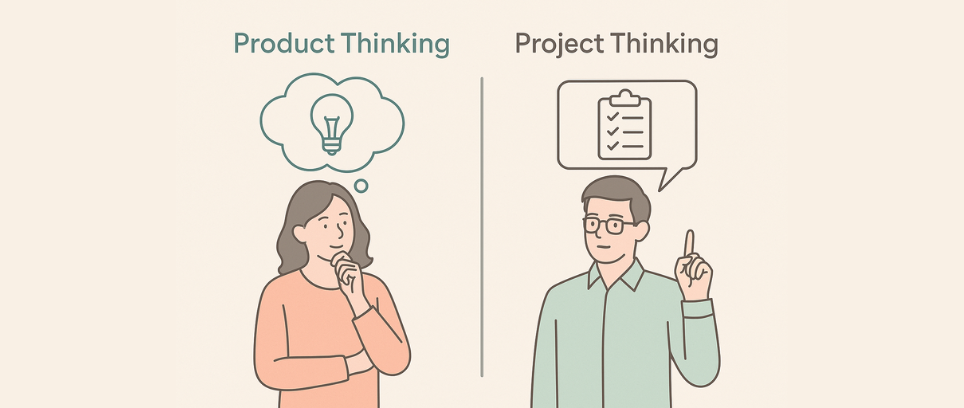In today’s fast-paced digital ecosystem, the lines between product and project management often get blurred. But if you’re a leader, a product manager, or even a team contributor, understanding the difference between product thinking and project thinking isn’t just semantic—it’s strategic.
What Is Project Thinking?
Project thinking revolves around outputs.
It focuses on executing a well-defined scope within a fixed timeline and budget. Success is measured by delivery: Did we build what we said we would? Did we do it on time?
It’s a great mindset when you’re dealing with:
-
Clear requirements
-
Known timelines
-
Defined deliverables (e.g., launching a campaign or implementing a CRM)
Think of it as building a bridge. Once it’s done, the project ends.
What Is Product Thinking?
Product thinking revolves around outcomes.
It focuses on solving real user problems in a sustainable way. The goal isn’t just to deliver features but to create value.
Instead of asking “What are we building?”, product thinkers ask:
-
Who are we building this for?
-
What problem are we solving?
-
How will we know it worked?
This mindset is critical in product development where iteration, feedback, and user-centricity are key.
The Risks of Project Thinking in a Product World
Many organizations still operate with a project mindset while claiming to be product-led. This leads to:
-
Feature factories: Teams push out features without validating impact.
-
Success theater: Celebrating launches even if they don’t move real metrics.
-
Misaligned incentives: Teams optimize for delivery, not outcomes.
Over time, this erodes user trust, wastes resources, and slows innovation.
How to Shift to Product Thinking
-
Start with the problem, not the roadmap: Frame work around user pain points and business goals.
-
Set outcome-driven goals: Use metrics like engagement, retention, or NPS over number of features.
-
Empower cross-functional teams: Give teams autonomy to experiment and solve, not just execute.
-
Treat roadmaps as hypotheses: Iterate based on feedback rather than fixed scope.
A Real-World Example: From Project to Product
Let’s say an Indian edtech startup wants to improve student engagement.
Project Thinking would say: “Build a new video feature by Q3.”
Product Thinking would say: “Students are dropping off midway. Let’s understand why. Maybe it’s not about the video—maybe it’s content pacing or UI.”
The latter unlocks better problem-solving, more learning, and real impact.
Final Thoughts
Project thinking gets things done. But product thinking gets the right things done—for the right reasons.
In a world where user needs evolve faster than timelines, switching to a product mindset isn’t a luxury—it’s a competitive necessity.
If you want to build products that truly matter, start thinking beyond scope and deadlines. Think value, impact, and users.
At Accredian, we’re already training PMs on this new skill stack — because the future of product leadership is already here. 🚀
Join our one of a kind Product Management Program in collaboration with E&ICT Acaedmy, IIT Guwahati, Executive Program in Product Management






